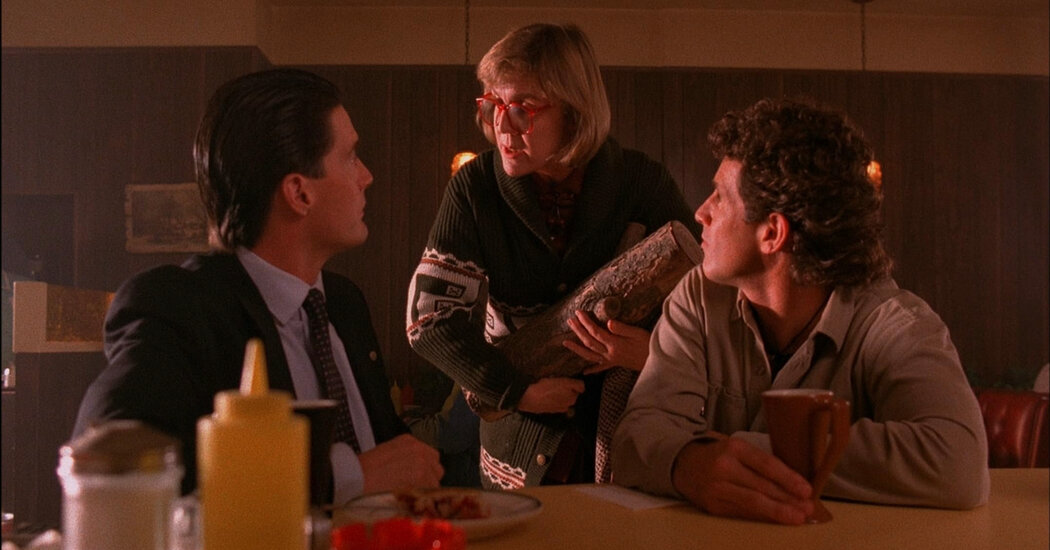Physical Address
304 North Cardinal St.
Dorchester Center, MA 02124
Physical Address
304 North Cardinal St.
Dorchester Center, MA 02124

Is “Twin Peaks” the greatest American television series ever made? Perhaps, it is not the first series that a country has chosen as its calling card: murder mystery, undeniable and dark, where the sacrifice of the innocent is made against the reputation of the mountain lords and cannibals. a small town. In it, David Lynch, who has died aged 78, lifted the floor of the American dream and unleashed a host of evil spirits from below.
But “Twin Peaks”, which Lynch made with Mark Frost, is full of America, surprising because of its humanity, like a painting of the West or a painting of Georgia O’ Keefe. From the opening credits, which cuts through the jungle and the screeching of mining machines, he sees a place of beauty and violence, full of animistic spirits that predate political borders and even human habitation.
It’s also a show of Americana, coffee and cherry pie, vintage pictures and doo-wop ballads. Lynch, who spent some of his childhood in the northwest, is often described as the actor who showed the rot behind the facade of the perfect American, and it is not wrong. (In the movie “Twin Peaks: Fire Walk With Me,” he even expressed “garmonbozia,” or worldly pain and sorrow, in the most American of dishes. 5th century, is ground corn.)
But there is nothing sarcastic or cynical about his portrayal in “Twin Peaks.” Full of darkness but no contempt. As FBI Special Agent Dale Cooper (Kyle MacLachlan) notes, it’s the work of a curious bird driven to dig deeper — under the grass, in the woods, outside of Earth’s airspace. don’t — to get there. the horrors and excesses of humanity.
That, to put it mildly, made “Twin Peaks” a must-see on weekend television when it first aired on ABC in the 1990s. it was amazing to see that it was not only a hit, but also a pop- culture sensation – from the director of the art house that released the well-known “Blue Velvet” a few years ago.
But “Twin Peaks” isn’t a high-profile work relegating itself to a lower medium. It was unashamedly commercial TV, mixing elements of school drama, police procedural and comic book. (Not to mention the soap-within-a-show, “Invitation to Love.”) Yes, there was an inexplicable crossover between the Black Lodge, the cryptic-speaking giant and the vicious murderous spirit. Bob – but first, there was a popcorn-entertainment whodunit with a tagline: “Who Killed Laura Palmer?”
“Twin Peaks” burned hot and short. It became shorthand for the kind of risky series that networks would shy away from out of fear they wouldn’t last, then for the kind of mystery entertainment people love like “Lost.” and “Yellowjackets.” One of its biggest successors is itself, in the form of “Twin Peaks: The Return”, the 18-episode sequel Lynch and Frost made for Showtime in 2017.
Lynch could have just turned this new “Twin Peaks” into a monument to the past, collected critical acclaim and called it a day. He did not. In form (experimental and muscular) and story (although more complex than the original) it is the work of an artist who continues to grow and push. (His acting career has been on hiatus since 2006’s “Inland Empire,” allowing him to pour his powers and hallucinatory visions into new episodes.)
“The Return” rejects nostalgia. He refuses to offer more fun, especially by spending most of the series with MacLachlan playing not the Cooper we know but two, the amazing Dougie Jones.
It is also expanding its geographic footprint, to Manhattan, Las Vegas and beyond. In its eighth and best episode—perhaps the most amazing hour I’ve seen on television, period—it travels through time and place to depict a pivotal moment in American history, the detonation of the atomic bomb. in New Mexico in 1945.
The explosion was first rendered in black and white, which becomes more colorful as we push the cloud of mushrooms, in the burst of excited rays we see the image of other forces, including the face of the scary spirit Bob.
The episode spans like a visual poem, across years and dimensions, with elements of silent films, B-movies and Stan Brakhage-style animation. A ghost like Abe Lincoln invades the DJ booth of a radio station; the beatific face of Laura Palmer appears in a floating golden orb. Enchanting, confusing, the images speak of a land of unspeakable horror and heartbreaking beauty.
In “Twin Peaks” and “The Return,” horror and wonder are two different expressions of the same force, and Lynch is the great poet of both. We hear that spirit echoed in Agent Cooper’s first monologue as he commands his thoughts, driving down a highway through the woods to investigate what will be a terrible mystery. “I have to find out what kind of trees they are,” he said. “They’re real things.”